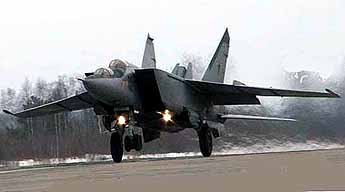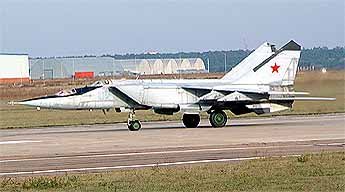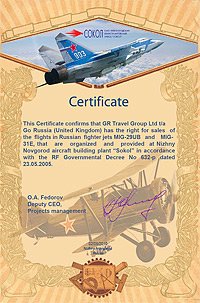 |
 | ||
| +44 (0) 20 33 55 77 17 | Call me back | Chat online | |
No flash player!
It looks like you don't have flash player installed. Click here to go to Macromedia download page.
MIG-25 Foxbat - History, Technical Characteristics. Fly MiG-25 in Russia
Fly MiG-25 as a civilianHowever sad it may be but it is no longer possible to fly MiG-25 as a private person anywhere in the world. Until 2005 it was possible for civilians to take a ride on MiG-25 in Russia at Zhukovsky Airbase near Moscow. But these operations have officially been stopped by the Russian Government, though many people still associate the aircraft with high-altitude flights to the edge of space. Please beware of any offers suggesting you fly MiG-25 in Russia from Zhukovsky - this legendary fighter is now stationed at Sokol Aircarft Building Plant.
If you did hope to fly MiG-25 we can offer you a better alternative – supersonic flights to the edge of space (21-25 km) on the newer high-altitude interceptor MiG-31 that replaced 25 series aircraft in the Russian AF. Another option would be our unique programme combining high altitude flight with supersonic aerobatics on MiG-29.
MiG-25 History and Technical Characteristics
The MiG-25 (NATO code “Foxbat”) is a high-altitude supersonic fighter interceptor and reconnaissance aircraft designed by Mikoyan-Gurevich bureau in the Soviet Union. The first prototype was developed in 1964, and the serial production started in early 1970. With a top speed of Mach 3.2, four air-to-air missiles, and a powerful radar it was an advanced fighter of that time. Its development by the Soviet Union stimulated creation of the F-15 Eagle jet.
MiG-25 is the world's first serial fighter to have reached the speed of 3000 km / h. In 1977, test pilot Alexander Fedotov achieved an absolute world altitude record of 37,650 meters on MiG-25, and other 29 world records have been registered with this aircraft. The MiG-25 series were used during the Syrian-Israeli conflict in 1982, the Iran-Iraq war in the 1980-1988 and during the Gulf War in 1991.
Mikoyan-Gurevich bureau have designed three prototypes of the aircraft: fighter interceptor Е-155П, high-altitude reconnaissance aircraft Е-155Р and a carrier Е-155Н (not in serial production), all having minor construction differences. The aircraft launch by the Soviet Air Force has substantially decreased American reconnaissance operations performed on Lockheed SR-71A in the Russian North and Far East when the Soviets started to fly MiG-25 in these remote areas.
In 1976 when Viktor Belenko (a Soviet military pilot) defected to Japan, the aircraft technical capabilities were revealed to the West although the aircraft was returned back to the USSR. An urgent decision has been made by the Soviet military to completely redevelop the armament system of the interceptor.
The serial production of MiG-25 interceptor families at Sokol Aircraft Building plant lasted from 1969 to 1982 with 1,190 aircraft built in total. By the end of 1991 there were around 550 MiG-25PD and MiG-25PDS on the territory of the former USSR. The aircraft retired from the Russian Air Force by mid-1990's. A small number of fighters remained in service in a number of CIS countries where they still could fly MiG-25, in particular, the Air Defence of Belarus and Ukraine.
Since 1979, several export versions of the interceptor MiG-25P had been delivered to a number of foreign countries (Iraq, Syria, Algeria, Libya, and India).
 |
 |
